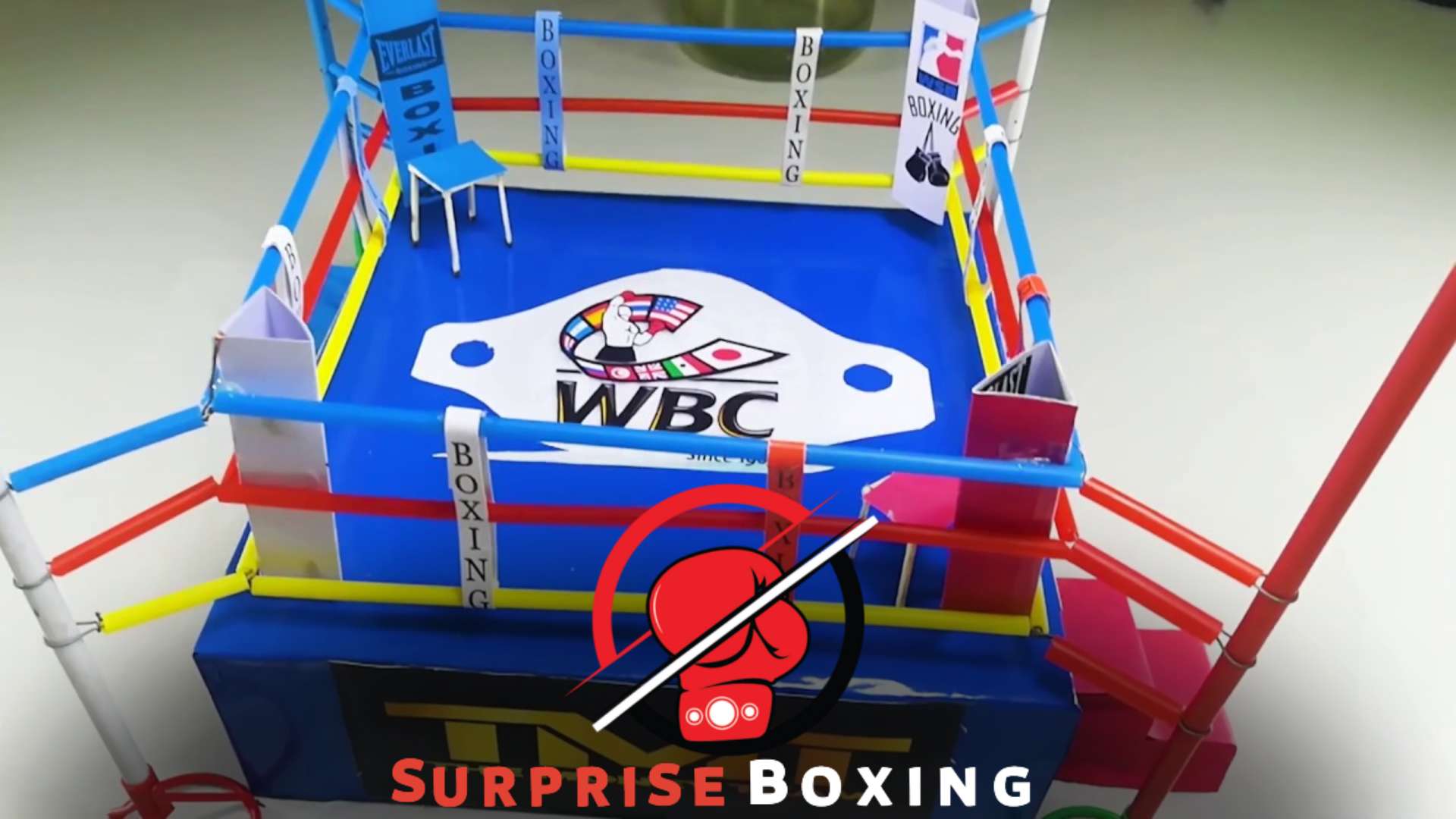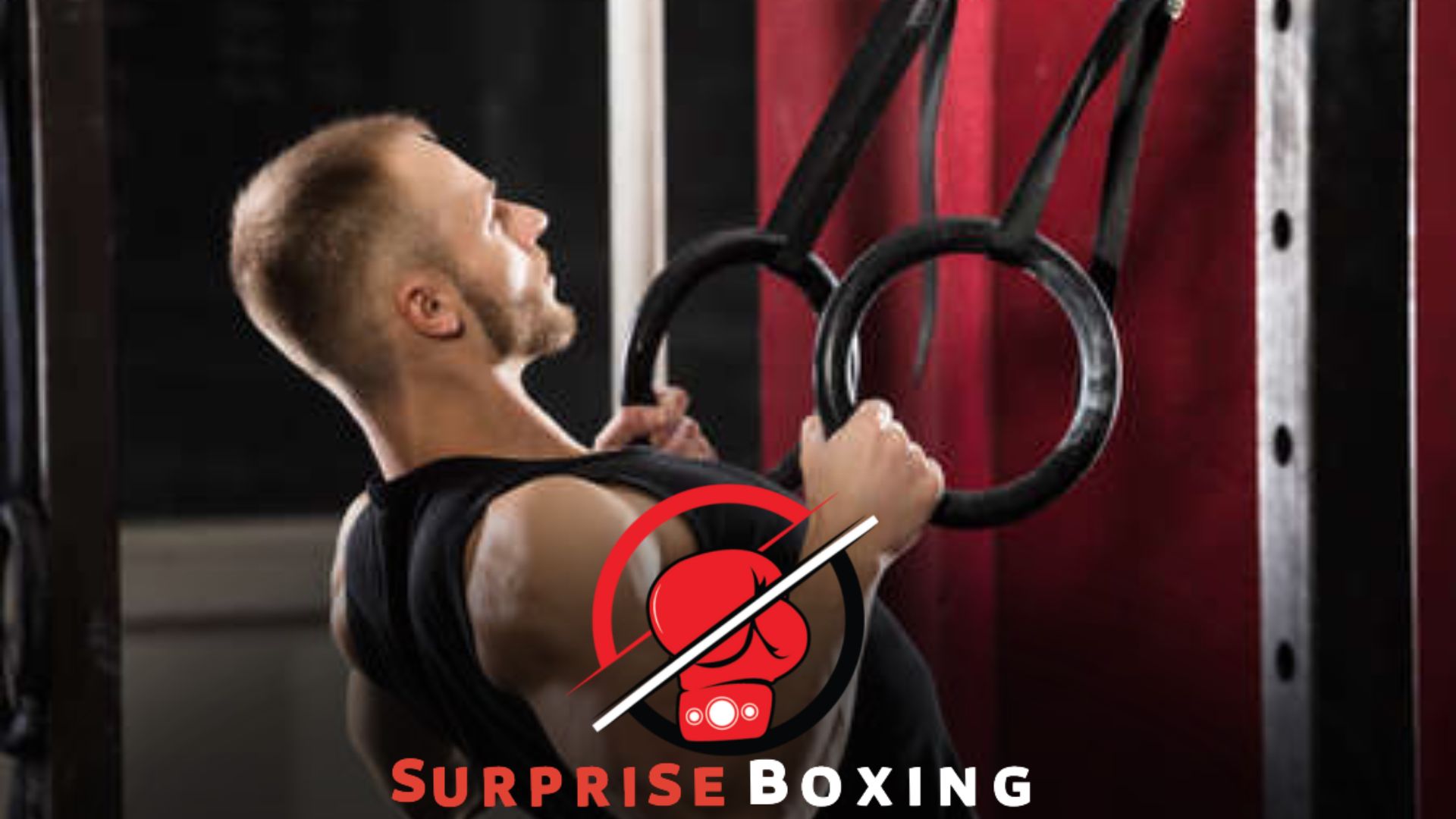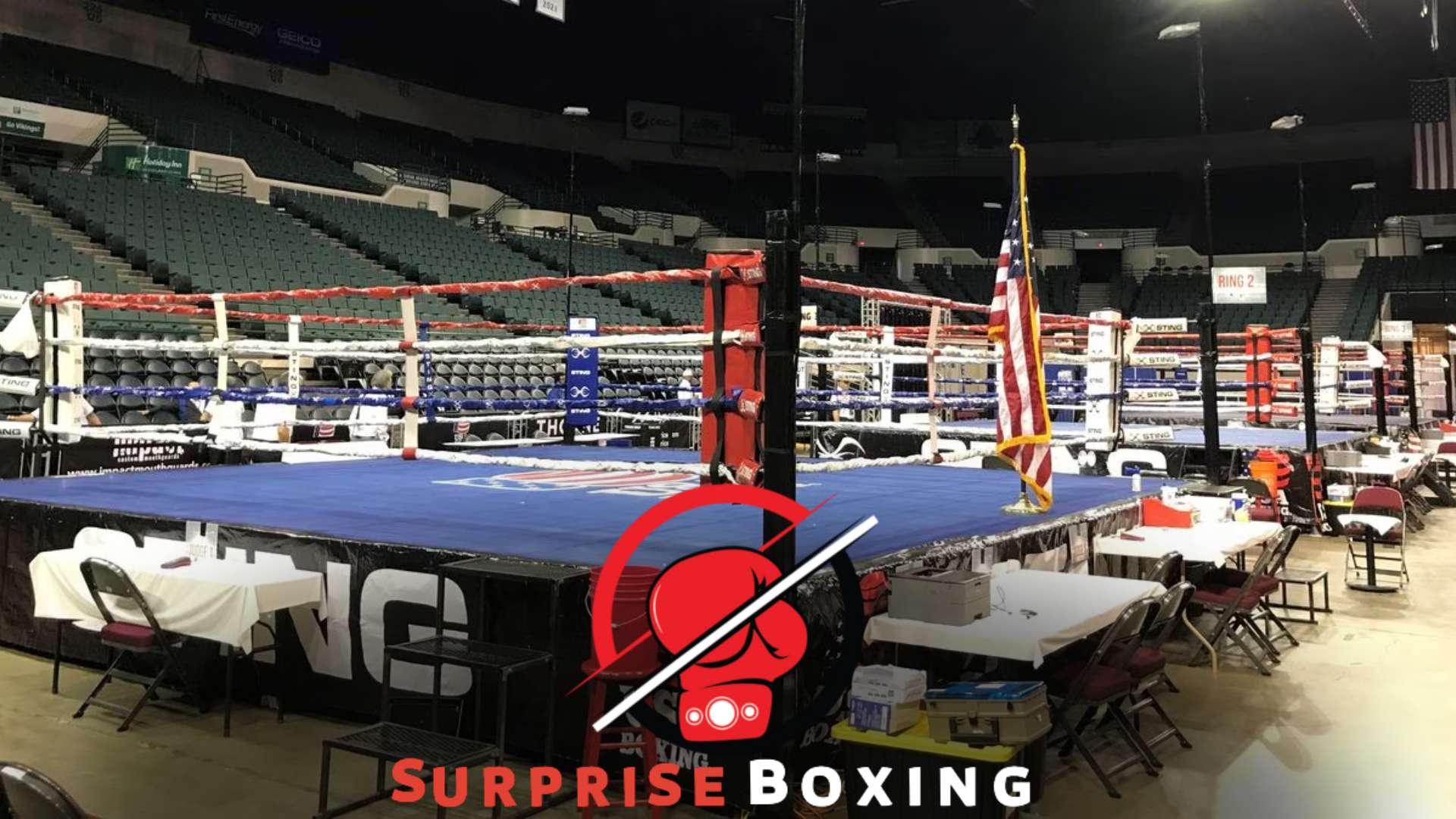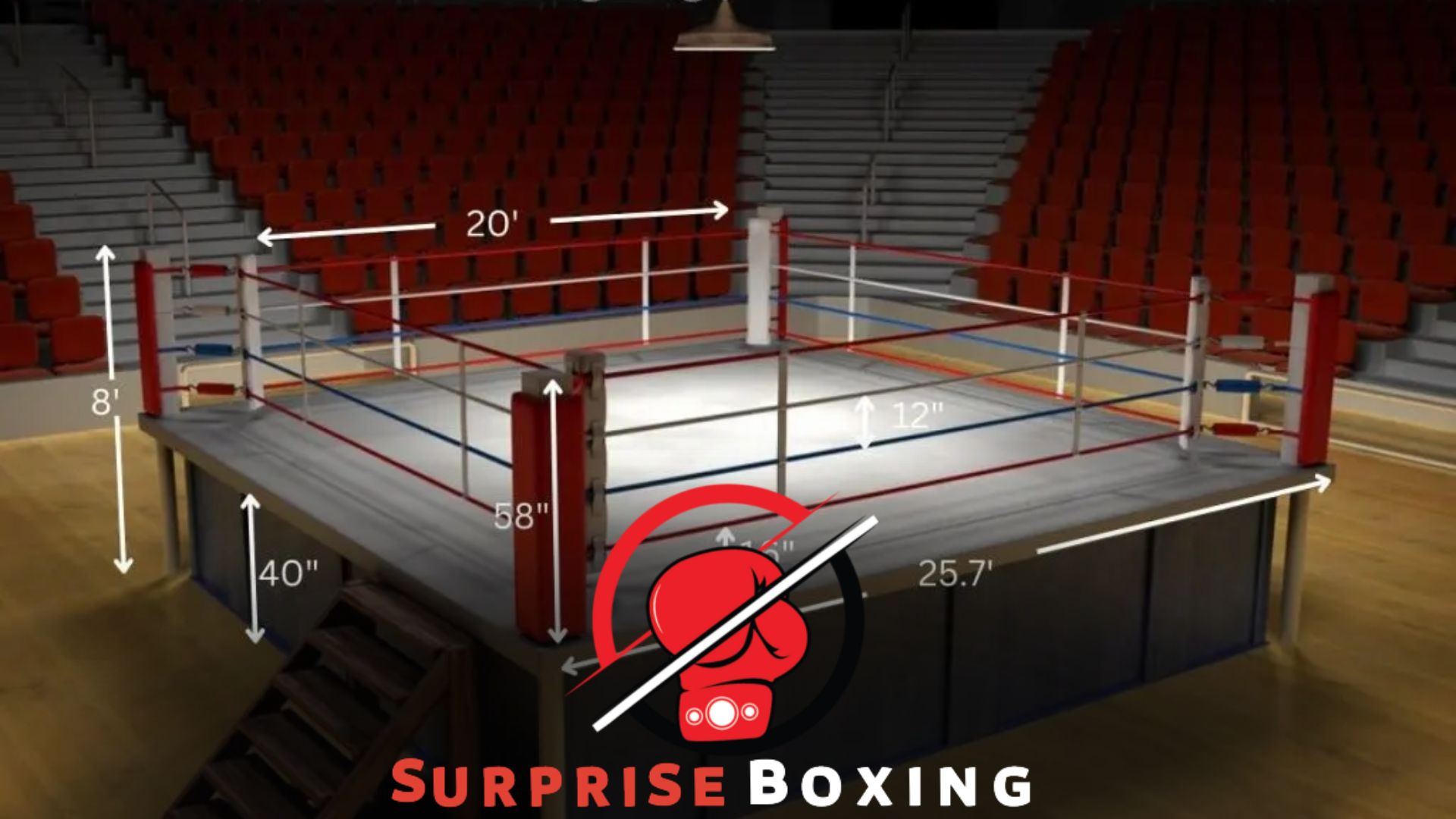Setting up a boxing ring involves assembling the necessary equipment and following specific dimensions and regulations. We will provide a step-by-step guide on properly configuring a boxing ring for training or competition.
Boxing is a prevalent combat sport that requires a proper setup for training or organized fights. Whether setting up a boxing ring in a gym or for an event, it is essential to follow specific guidelines and dimensions to ensure safety and fairness.
This guide will walk you through setting up a boxing ring, from assembling the equipment to adhering to the regulations. By carefully following these steps, you can create an ideal environment for boxers to hone their skills and engage in thrilling matches. So, let’s dive into the details and learn how to set up a boxing ring effectively.
Preparing the Ground: Essential Steps for Setting Up Your Boxing Ring

Setting up a boxing ring requires essential steps to ensure a smooth and safe experience. Careful preparation is necessary, from measuring the dimensions and selecting the right equipment to securing the crew and providing proper lighting. This guide will walk you through the essential measures to set up your boxing ring efficiently.
Setting up a boxing ring requires careful planning, attention to detail, and a well-prepared ground. Before constructing the call, you must ensure the environment is adequately prepared to provide a safe and solid foundation for the boxing ring.
This section will guide you through the essential steps for preparing the ground.
Clear the Area
- Start by clearing the designated area where the boxing ring will be installed.
- Remove any debris, rocks, or objects that could pose a potential hazard during training or matches.
Level the Ground
- Use a leveling tool or a laser level to ensure the ground is even and flat.
- This will help prevent the ring from being unsteady or tilted.
Mark the Center and Corners
- Measure and mark the center point of the boxing ring area.
- From the center point, measure and mark the ring’s corners.
- This will serve as your guide for setting up the ring later on.
Dig Holes for Footings
- Determine the locations for the corner posts of the boxing ring.
- Dig holes at these designated spots to create footings for the corner posts.
- Standard dimensions for the holes are usually around 30 inches deep and 12 inches in diameter.
Fill Footings With Concrete
- Pour concrete into the holes you’ve dug for the corner post footings.
- Make sure the concrete is leveled and tamped down for stability.
- Allow sufficient time for the concrete to cure and set properly.
Install Corner Posts
- Once the concrete has fully set, install the corner posts into the footings.
- Secure them tightly to ensure stability and safety.
- Use appropriate tools and equipment to avoid damaging the posts.
Install the Ring Base
- Place the ring base onto the corner posts.
- Ensure that it is securely attached and properly aligned with the marked corners.
Secure the Mat
- Lay out the mat on top of the ring base.
- Secure it tightly using the provided fasteners or ropes.
- Smooth out any wrinkles or creases to ensure a flat surface.
Install Ropes and Turnbuckles
- Attach the ropes to the designated points on the corner posts.
- Adjust their tension using turnbuckles until they are securely fastened.
- Make sure the ropes are evenly tightened for a balanced structure.
Double-Check Stability
- Once everything is set up, double-check the stability and integrity of the boxing ring.
- Give a gentle shake to ensure it does not wobble or sway excessively.
- Make any necessary adjustments to enhance stability, if needed.
Preparing the ground for a boxing ring is crucial in setting up a safe and sturdy training or competition space. Following these essential steps can create a solid foundation to ensure the boxing ring’s stability and safety.
Step-By-Step Setup Guide: Constructing Your Boxing Ring Like a Pro
Learn how to set up a professional boxing ring with our step-by-step guide. Constructed like a pro, this setup will ensure a flawless boxing experience.
Boxing rings are the battleground for fierce competition and are the focal point for spectators to witness the thrilling matches unfold. Constructing a boxing ring may seem daunting, but with the proper guidance, you can set up your ring like a pro.
In this step-by-step guide, we will walk you through building a boxing ring from start to finish, ensuring that you have all the knowledge and instructions you need to create a professional-grade arena.
Planning and Preparation
- Determine the appropriate location for your boxing ring, considering available space, access, and safety requirements.
- Obtain the necessary permits and approvals from local authorities to ensure compliance with regulations.
- Measure the dimensions for your boxing ring, considering the recommended size of 16 to 20 feet square.
Materials and Equipment
Gather all the required materials and equipment for constructing the boxing ring, including the following:
- Steel or aluminum ring posts: These sturdy pillars provide support and stability.
- Ring ropes: These strong ropes enclose the ring and keep the fighters within bounds.
- Turnbuckles: These metal devices tighten the ropes and allow for adjustments.
- Boxing canvas: This durable canvas covers the ring floor, providing a smooth surface for the fighters.
Constructing the Boxing Ring
- Begin assembling the ring posts, ensuring they are anchored to the ground.
- Attach the turnbuckles to the ring posts, adjusting them to achieve the desired tension in the ropes.
- Connect the ring ropes to the turnbuckles, ensuring they are evenly spaced.
- Install the boxing canvas over the ring floor, ensuring it is tightly secured and free of wrinkles or folds.
Safety Features
- Prioritize safety by installing suitable padding on the ring posts and ropes, minimizing the risk of injury.
- Consider adding corner pads for additional protection at the corners of the ring.
Finishing Touches
- Once the boxing ring is constructed, inspect all components for stability and proper installation.
- Make any necessary adjustments to ensure the ring is structurally sound and safe.
- Clean the ring surface, removing any debris or markings that may hinder the fighters’ performance.
With these comprehensive steps, you can construct a boxing ring that meets professional standards. Remember to prioritize safety throughout the process, following the guidelines and regulations of your local authority. It’s time to create an exhilarating stage for the boxing matches that will captivate both participants and spectators.
Safety Checks and Final Adjustments: Ensuring a Secure and Risk-Free Boxing Ring Environment
Ensure a secure and risk-free boxing ring environment by conducting thorough safety checks and final adjustments. This step is crucial in setting up a boxing ring to provide a safe space for athletes to train and compete.
Setting up a boxing ring requires careful attention to detail to ensure a secure and risk-free environment. Safety checks and final adjustments play a crucial role in establishing a safe boxing ring that promotes the well-being of both the boxers and spectators.
This section will discuss the critical aspects of safety checks and final adjustments to help you create a secure boxing ring setup.
Safety Checks
- Ring posts: Examine the ring posts to ensure they are securely anchored to the floor. Check for any looseness or instability that could compromise the ring’s integrity.
- Ring ropes: Inspect the ring ropes to ensure they are in good condition and properly tensioned. Ensure that no frays, knots, or damaged sections could pose a safety risk during fights.
- Canvas: Check the boxing ring’s canvas for any tears, rips, or wrinkles. Smooth out any wrinkles and repair any damage to provide a stable and safe surface for the boxers.
- Padding: Verify that the padding around the ring posts, turnbuckles, and ring apron is in good condition and adequately cushions potential impacts. Replace any worn-out or insufficient padding to maintain a safe environment.
- Corner pads: Check the corner pads to ensure they are securely fastened and provide sufficient protection to the boxers during fights. Replace any damaged or worn-out corner pads promptly.
Final Adjustments
- Ring dimensions: Measure and confirm that the boxing ring dimensions comply with the established standards. Ensure that the ring size, height, and distance between the ropes meet the specifications for the particular boxing event.
- Ring lighting: Evaluate the lighting setup around the boxing ring to ensure proper visibility for the boxers and officials. Adjust the lighting fixtures to eliminate shadows or dimly lit areas that may hinder the participants’ ability to see clearly.
- Flooring: Inspect the flooring beneath the ring to ensure it is level and free from hazards. Remove debris or objects that could interfere with the boxers’ movements or cause tripping accidents.
- Medical supplies: Prepare a well-stocked first aid kit and have it readily available near the boxing ring. Ensure that essential medical supplies, such as ice packs, bandages, and disinfectants, are easily accessible in case of injuries.
- Emergency exits: Identify and mark emergency exits near the boxing ring. Ensure that these exits remain unobstructed throughout the event to provide a safe evacuation route if needed.
You can establish a secure and risk-free boxing ring environment by conducting thorough safety checks and making the necessary final adjustments. Prioritizing safety protects the participants and enhances the overall experience for everyone involved in the boxing event.
Maintenance, Inspection, and Safe Ring Breakdown
Setting up a boxing ring involves proper maintenance, regular inspections, and thorough breakdowns to ensure safety. Following these steps can create a safe and reliable environment for boxing matches.
Maintaining a boxing ring is crucial for its longevity and ensuring the safety of all participants. Regular inspections and proper breakdown procedures are essential for preventing accidents and injuries. This section will discuss the critical maintenance, assessment, and safe ring breakdown aspects.
Regular Maintenance
- Cleaning: Regularly clean the boxing ring to remove debris, sweat, and blood. Use mild detergent and water to clean the canvas, ropes, turnbuckles, and all other ring components. Remember to dry the ring properly after cleaning to prevent any slipping hazards.
- Inspecting ropes and turnbuckles: Check the cords and turnbuckles for signs of wear and tear. Make sure the strings are well-tensioned and securely attached to the turnbuckles. Replace any damaged ropes or turnbuckles immediately to avoid accidents.
- Checking padding: Inspect the padding around the ring apron, corner pads, and ring posts. Ensure that the padding is still intact and provides sufficient protection. If any deterioration or damage is noticed, replace the padding right away.
- Examining the canvas: Regularly explore the canvas of tears, rips, or loose areas. Repair any damages promptly to avoid trip hazards. Keep a spare canvas on hand for quick replacement if necessary.
- Maintaining the flooring: If the boxing ring has wooden or concrete flooring, ensure it remains in good condition. Address any cracks, weak spots, or uneven surfaces immediately.
Inspection Procedures
- Rope tension test: Regularly check the tension of the ropes by applying gentle pressure. The strings should have a firm resistance without excessive sagging or looseness.
- Turnbuckle check: Inspect the turnbuckles for secure attachments and make any necessary adjustments. Ensure they are correctly tightened and can withstand the force exerted during matches.
- Padding evaluation: Routinely assess the condition of the padding for any signs of compression or deterioration. Test the impact absorption capabilities by applying pressure at various points.
- Canvas assessment: Examine the canvas for loose areas, tears, or unevenness. Perform a thorough walkover to identify potential tripping hazards.
- Flooring inspection: Inspect the flooring for cracks, splinters, or weaknesses. Ensure that it is stable and can support the weight and movement of the boxers.
Safe Ring Breakdown
- Clearing the ring: Before initiating the breakdown process, ensure the call is cleared of all equipment, debris, and unnecessary items.
- Loosening the ropes: Begin by reducing the strings, one at a time, from their turnbuckles. Carefully detach the ropes from the turnbuckles and roll them neatly for storage.
- Removing turnbuckles: Unscrew them from the ring posts and keep them in a designated storage area. Inspect the turnbuckles for any damages and make replacements if necessary.
- Disassembling the padding: Remove the corner, apron, and ring post pads. Store them safely to prevent any damage or loss.
- Folding the canvas: Carefully fold it, ensuring it is clean and free from debris or moisture. Store it in a dry and appropriate location to maintain its condition.
- Inspecting and storing components: Inspect all ingredients thoroughly before completing the ring breakdown. Repair or replace any damaged or worn-out parts. Store all the disassembled pieces in a well-organized manner for easy setup in the future.
Following proper maintenance protocols, conducting regular inspections, and safely breaking down the boxing ring can ensure a safe and professional environment for boxers, trainers, and spectators. Remember, the well-being of everyone involved is the top priority.
Safety Precautions
- Ensure the ring is set up on a stable and level surface to prevent accidents or injuries.
- Ensure all ropes are tightly secured and adequately tensioned to provide a safe barrier for the fighters.
- Conduct regular inspections of the ring, checking for any loose or damaged components that may pose a safety risk.
Ring Dimensions
- The standard size of a professional boxing ring is 20 feet by 20 feet, with ropes extending 18 inches from the corners of the ring.
- The ring size may vary for amateur boxing matches, but it should adhere to the guidelines set by the specific sanctioning body.
Equipment Needed
- Four corner posts: These vertical posts provide support for the ring ropes.
- Turnbuckles: These are used to secure and adjust the tension of the ropes.
- Ring canvas: Choose a durable, non-slip canvas to ensure optimal performance and safety.
- Ring padding: Use high-quality padding to minimize the impact on fighters during matches.
- Ring ropes: The number of strings can vary, but most rings have three or four ropes.
Steps To Set Up a Boxing Ring
- Start by firmly assembling the corner posts and securing them to the ground or the provided base plates.
- Attach the turnbuckles to the corner posts and adjust the tension of the ropes to ensure they are correctly tightened.
- Lay the ring canvas over the boxing ring frame, ensuring it is centered and flat.
- Secure the canvas tightly to the ring frame using bungee cords or other fastening materials.
- Attach the ring ropes to the corner posts and ensure they are evenly tensioned.
- Check the stability of the ring by giving it a gentle shake and making any necessary adjustments.
Remember, setting up a boxing ring requires attention to detail and adherence to safety guidelines. Following these steps can create a professional and safe environment for boxing matches and training sessions. Happy boxing!
Please make sure to follow the provided instructions while writing this section.

Frequently Asked Questions of How To Set Up a Boxing Ring
What is the Standard Size of a Boxing Ring?
The standard size of a boxing ring is between 16 and 20 feet square, with the ring raised about 1-4 feet off the ground. This size ensures enough space for boxers to move around and provide a safe and competitive environment.
How Do You Set Up the Ropes in a Boxing Ring?
To set up the ropes on a boxing ring, start by attaching the turnbuckles to each corner post. Then, thread the string through the turnbuckles, ensuring it is tight and secure. Finally, tie off the rope and repeat the process for the remaining sides, ensuring the cords have the right height and tension.
What Kind of Padding is Recommended for a Boxing Ring?
A foam-based padding system is recommended for a boxing ring. The padding should be firm enough to provide support and cushioning but not too soft to affect the boxers’ movement and stability. It is essential to choose padding that meets safety standards and is suitable for the intensity of the sport.
How Do You Secure the Canvas on a Boxing Ring?
To secure the canvas on a boxing ring, start by positioning the canvas evenly over the ring. Then, attach the canvas to the ring posts using hooks or staples, ensuring it is taut and wrinkle-free. Trim any excess canvas and secure the edges with tape or velcro to prevent tripping hazards.
What Equipment is Needed To Set Up a Boxing Ring?
Setting up a boxing ring requires ring posts, corner pads, turnbuckles, ropes, canvas, padding, and a level surface. Tools like a tape measure, hammer, and staple gun may also be needed for installation. Make sure to gather all the necessary equipment before starting the setup.
Are There Any Safety Regulations for Setting Up a Boxing Ring?
Yes, safety regulations must be followed when setting up a boxing ring. These regulations may vary depending on the governing body or organization. It is essential to research and adhere to these regulations, which may include requirements for padding thickness, ring dimensions, and other safety measures to ensure the well-being of the boxers.
Conclusion
Setting up a boxing ring may seem daunting, but it can be done smoothly with the proper knowledge and preparation. By following these steps, you can ensure a safe and professional environment for boxing events or training sessions.
Start by finding an appropriate location with enough space for the ring and spectators. Then, gather all the necessary equipment, such as ring ropes, corner pads, and canvas covers. Secure the ring properly and inspect it regularly for any damages.
Additionally, consider the logistics of seating, lighting, and sound system to enhance the overall experience. Finally, prioritize safety by providing adequate first aid equipment and implementing rules and regulations. Attention to detail and careful planning are essential when setting up a boxing ring.
So, get ready to create a space where boxers can showcase their skills and passion for the sport in the most optimal way possible.














